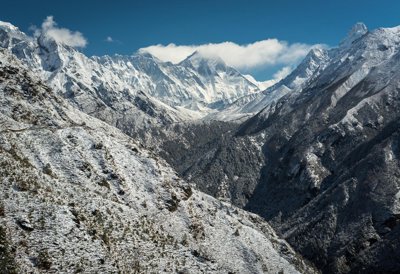Downloads
RGS-IBG case study Peatland fires Indonesia (.pdf)
This research has drawn unprecedented attention to the degradation of peatland forest and swamp environments in Indonesia. The work of researchers at the University of Leicester has both highlighted and quantified the significant carbon emissions associated with fire, drainage and plantations in tropical peatlands, considerably influencing environmental policy and monitoring worldwide and supporting peatland rehabilitation.
Challenge
The tropical peatland swamps and forests of Indonesia are an underappreciated carbon sink. Fire and drainage of peatlands result in ecosystem degradation, and the release of greenhouse gases. The research project has examined numerous poorly-understood aspects of peatland fire, degradation and plantation development. Researchers aimed to:
-
Understand the dynamics of the peatlands, especially the effects of fire and drainage
-
Quantify and understand the release of carbon from damaged peatlands
-
Establish research techniques, including remote sensing techniques, for examining peatlands
This issue is particularly important because of the scale of emissions from degraded peatland, the extent of peatland subjected to fire, and former peatland converted for plantations and agriculture. Peatland fires in 1997 were found to have delivered up to 40% of the mean annual global carbon emissions in a single major fire event.
The research is especially timely because 70% of all plantations on peatland in Indonesia have been established since 2000. The evolving landscape and the effects of emissions and degradations were poorly understood, which limited effective policy and governance responses.
Solution
Professor Sue Page (University of Leicester) led the initial research on the 1997 peatland fires, combining remote sensing and fieldwork in Borneo. Her team combined satellite imagery from time periods before and after the major 1997 El Nino fires with measurements of the depth of burnt material, and extrapolated the overall carbon release.
Later projects by Professor Page and other colleagues mapped vegetation fires and refined the scope of the problem. Subsequently, Page and the team were able to confirm important unit emission factors for CO2 emissions from plantations grown over peat. These steps were important to establishing a reliable methodology, and most critically of all, refining the understanding of the scale of the carbon source from tropical peatlands.
During and after the research period, team members engaged with policymakers, academics and research projects, driving positive research impacts and making the research influential in environmental management policy and practice.
Benefits
Better decision-making and governance
The team used their findings to inform policy change and drive practical projects in Indonesian peatlands to reduce degradation. The research has driven policy change in a number of countries and organisations. In Indonesia, the research has influenced guidelines and action plans on emission reduction, peatland protection and oil palm cultivation. It has also been cited in EU biofuels policy reporting and US renewable fuels policy – in the latter case, palm biodiesel does not qualify as a renewable fuel, ultimately reducing carbon emissions from this source.
Solving problems
The research has been used to support peatland rehabilitation in Indonesia under a UN REDD project, for which Professor Page acted as technical adviser. In the private sector, major multinational pulp company APRIL are working with Page on responsible management of their peatland plantations.
Combining systems or data
Tansey’s research on fire mapping has contributed data to UN WMO publications and projects regarding the development of Essential Climate Variables that include fire disturbance, emissions and land surface temperature, which supported the inclusion of peat emissions in IPCC reporting. Project findings have been integrated into academic and policy reporting worldwide, and have significantly raised the profile of peatland fire and degradation.
Share this case study
This is an open access article under the terms of the Creative Commons Attribution License (CC BY NC 4.0), which permits use, adaptation, distribution and reproduction in any medium or format, provided the original work is cited and it is for non-commercial purposes. Please contact us for other uses.
How to cite
Royal Geographical Society (with IBG) (2019) Understanding and addressing fire, degradation and carbon emissions in Indonesia’s peatlands. Case study. [online] Available at: http://www.rgs.org/impact/tropicalpeatlands Last accessed on: <date>
Featured image: @kenshono/Unsplash
